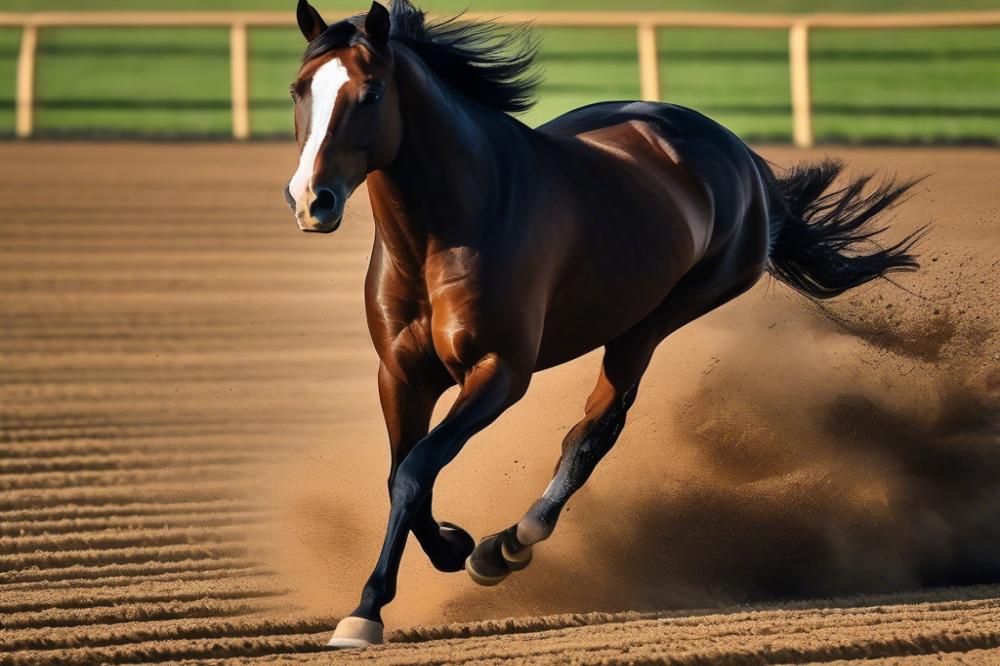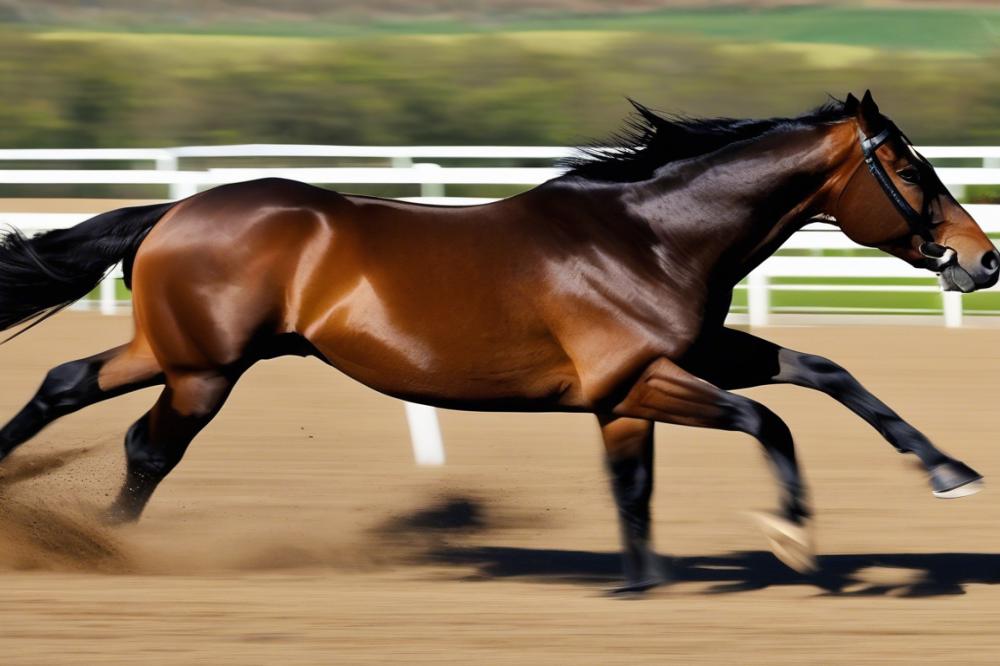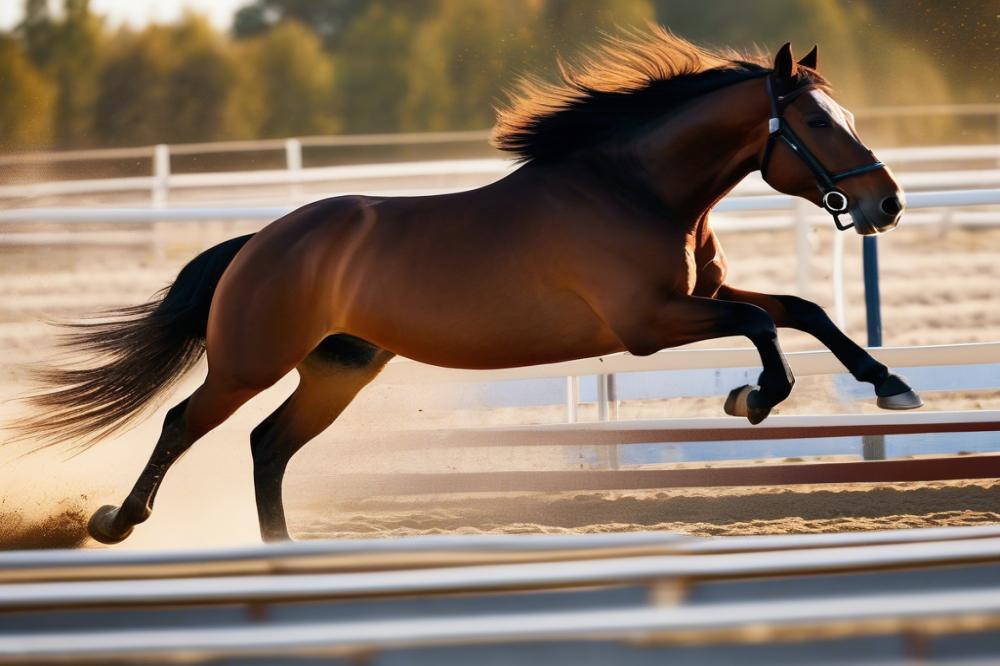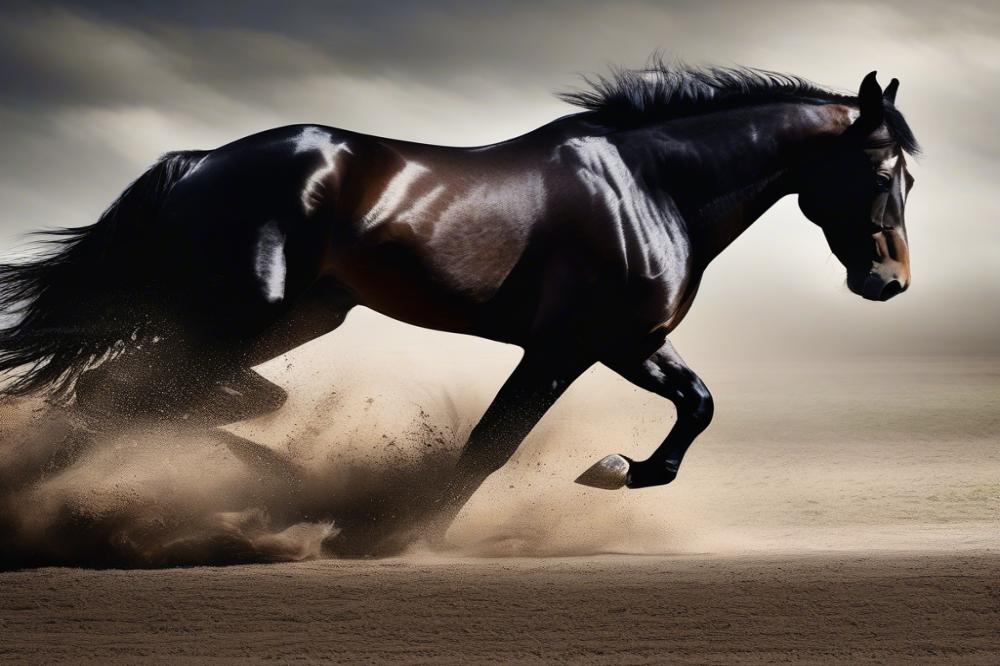Understanding Horse Endurance
Ever watched a horse gallop across a field, mane flying, hooves thundering like a marching band? It’s a sight that can take your breath away. Horses are built for speed and endurance, and their ability to run long distances has been admired since ancient Rome when horses were valued for both racing and carrying warriors. But as amazing as their endurance is, it’s important to dive deeper into what that means for horse health and overall performance.
Every equestrian knows that managing equine endurance requires a fine balance. On one hand, there’s the thrill of horse racing, where every second counts, and whether a horse can maintain its speed can mean the difference between glory and defeat. On the other hand, pushing a horse too hard can lead to fatigue—or worse—injury. Nobody wants to see a majestic creature struggle or collapse from exhaustion. That’s heartbreaking and, frankly, could be a recipe for disaster.
Why Understanding Endurance Matters
Equine care goes beyond the barn and fencing; it’s about knowing how to train a horse properly. Preventing horse fatigue should be a top priority for owners and trainers alike. Horses, like any athlete, need a well-rounded training regimen that respects their physical limits while challenging them to grow stronger. It’s not just about how fast they can run; it’s also about how safely they can perform over time.
Finding that sweet spot between performance and health is where the skill of the rider comes into play. It’s like trying to find the best western saddle for thoroughbreds—what might work for one horse won’t be ideal for another. Each animal has its nuances and needs, requiring a thoughtful approach to their training and care.
To sum it up, understanding a horse’s endurance isn’t just a matter of watching them sprint; it’s about knowing their limits and keeping their wellbeing as a top concern. After all, a well-cared-for horse is not only more likely to perform better but also to have a longer and healthier life. Let’s keep our magnificent friends running strong, not towards the finish line alone but with their health in the lead.
Understanding Horse Physiology

Overview of Horse Anatomy Related to Endurance
Horses are impressive creatures built for speed and stamina. Their long legs and powerful bodies contribute to their ability to cover vast distances. The heart of a horse is quite large and pumps blood effectively to nourish those muscles. This strong cardiovascular system boosts endurance during activities like racing or trail riding.
A horse’s lungs are also substantial, allowing for a large intake of oxygen. This is vital, especially when it’s running at high speeds. Other important parts include tendons and ligaments, which act like ropes, connecting muscles to bones. Well-conditioned muscles help they move efficiently. Too much strain, however, can lead to injuries.
Muscle Types and Energy Systems in Horses
Horses have different muscle types, each designed for various activities. There are slow-twitch muscles, which are great for endurance. These muscles burn energy slowly but efficiently. You could say they’re the marathon runners of the horse world. Fast-twitch muscles, on the other hand, give bursts of speed. This is the sprinting energy that shines in horse racing.
When horses run, they primarily depend on two energy systems: aerobic and anaerobic. The aerobic system requires oxygen, making it crucial for longer activities. However, when a horse pushes too hard, the anaerobic system kicks in. While useful for short bursts, overexertion in horses using this system can lead to fatigue or even muscle damage.
Factors Affecting Endurance Performance
Many elements impact how well a horse can maintain its stamina. Horse health is a key factor. Keeping a horse fit and healthy means regular vet check-ups and proper nutrition. A balanced diet fuels the horse, much like how a good meal can energize a person before a workout.
The climate plays its role too. Horses can struggle in extreme heat or cold. Extreme weather may shorten their stamina and affect performance. Another consideration is how well-trained the horse is. Regular conditioning builds strength and endurance. It’s like training for a big game.
Moreover, preventing horse fatigue is important. Knowing when to rest is just as crucial as knowing when to run. A horse that gets too tired risks injury. It’s essential for those who care for horses to recognize the signs of distress. The bond between horse and handler can make all the difference in sustaining performance during equine endurance events.
Horse Running Endurance in Different Breeds

Comparison of Endurance Capabilities Among Various Horse Breeds
Not all horses are created equal when it comes to how long they can run. Some breeds are champions at endurance while others prefer short, speedy bursts. For instance, Arabians are known for their remarkable stamina, often outlasting others in long-distance races. In contrast, Thoroughbreds generally excel in horse racing, showcasing speed but not always the same endurance as an Arabian.
Every breed has its own strengths. Some horses can keep going for hours, while others tire quickly. The key is understanding what each breed was developed for. Certain breeds were bred for battle or long journeys, making them naturally suited for endurance. Others, like the Quarter Horse, shine in short sprints. It’s all about the original purpose behind the breeding.
Examples of Breeds Known for Exceptional Endurance
Arabians take the crown for long runs. Their bodies are built for endurance. They can go for surprising distances without tiring out. Another breed worth mentioning is the Mustang. These horses are tough and can handle rugged terrains with grace and power.
Then we have the Morgan horse, famous for versatility and stamina. While they may not be the first breed that comes to mind for endurance, they perform well in many disciplines. They have a lot of heart and spirit, which helps too. Don’t forget the Appaloosa, known for its long-distance capabilities as well. Each breed brings something special to the table.
Role of Genetics in Horse Running Endurance
Genetics plays a major role in how well a horse can run without tiring out. The DNA of each horse contributes to its muscle fibers and overall stamina. Some horses might inherit strong endurance genes, while others might be built for speed. It’s like the difference between a marathon runner and a sprinter in humans.
Equine endurance often relies on other factors too, like training and nutrition. Even the best horse can face issues like overexertion in horses if not handled correctly. Understanding horse health is crucial in this mix. Proper equine care makes a big difference in performance. Knowing when a horse is fatigued helps owners and trainers keep them healthy and happy.
Ultimately, genetics combined with good care makes all the difference for a horse’s running capabilities. So, while one horse might excel in endurance races, another might need a break after a quick sprint. It’s all part of understanding the wonderful world of these magnificent creatures.
The Science of Endurance Training

Principles of Training for Endurance in Horses
Training a horse for endurance is not just about riding until they are tired. It involves a lot of careful planning and knowledge. Start with building a solid foundation. You wouldn’t build a house on sand, right? Similarly, a horse needs a strong base of fitness before tackling longer distances. The objective is to improve stamina gradually while keeping the horse’s well-being in focus. The last thing anyone wants is overexertion in horses.
The training schedule should combine long, low-intensity rides with shorter, more intense ones. This mix helps horses adapt to the physical demands of equine endurance. Every horse is different. Some may take longer to adjust, while others might surprise you with their speed. Keeping an eye on their body language is crucial. Watch for signs of fatigue. If a horse is dragging its feet, it might be time to slow down.
Importance of Gradual Conditioning and Fitness Plans
When building up a horse’s fitness, slow and steady truly wins the race. Jumping into high-intensity workouts can lead to injuries or burnout. Consider it like preparing for a big test; you need to study a bit each day instead of cramming at the last minute. A well-structured fitness plan tailors to the horse’s individual needs. It should include rest days to avoid wear and tear. Healthy horses require breaks just like humans.
Use a variety of terrains for training. Riding on different surfaces can help improve balance and strength. Make each session engaging. A bored horse isn’t a happy horse. Incorporating fun activities can spice things up and keep both horse and rider motivated. The aim is to prevent horse fatigue while still making progress.
Role of Nutrition and Hydration in Endurance Training
Nutrition is a game-changer for any athlete, and horses are no exception. Feeding them the right balance of nutrients helps fuel their workouts. High-quality hay and grains are essential. After all, you can’t expect a car to run well on low-grade gasoline. The right diet not only boosts performance but also supports overall horse health.
Hydration is equally vital. Always have fresh water available. A dehydrated horse can quickly lose energy and stamina. It’s like trying to run a marathon after skipping breakfast. Always remember that ensuring hydration before, during, and after training sessions can make or break an endurance event.
Monitoring a horse’s weight and adjusting its feed can help keep it in tip-top shape. Every horse deserves the best care, especially when training for something demanding like horse racing. Attention to nutrition and hydration will yield positive results, leaving both horse and rider ready to tackle the next challenge.
Risks of Overexertion in Horses
When it comes to running, overexertion in horses can be a real concern. Horses are athletes, but they aren’t machines. Just like us, they have limits. Overdoing it can lead to severe problems. Some folks might think their horse can run forever, but that’s simply not the case. Proper equine care is essential for keeping them healthy and happy.
Signs of Fatigue and Stress in Horses During Running
Recognizing when a horse is worn out is crucial for their safety. Generally, a horse that is tired might show signs like heavy breathing, excessive sweating, or reluctance to continue. Droopy ears can be another clue that a horse isn’t feeling its best. Sometimes, they may even appear to be limping. Paying close attention to these signs is like being a good coach. You wouldn’t push a friend who was ready to drop, right?
Medical Conditions Associated with Overexertion
Overexertion in horses can lead to significant health issues. One common problem is heat stroke, which can happen if they overhear after strenuous running. Muscles can also suffer from strains or sprains, which often require time to heal. In more serious cases, it could lead to laminitis, a painful condition in the hooves. All of this goes to show that horse racing is thrilling, but safety must come first.
Understanding the Limits: Can a Horse Run to Death?
The question of whether a horse can run to death might sound extreme, but it’s important to consider. Horses can definitely push themselves to dangerous levels. It’s like watching a friend who won’t quit even when they’re clearly exhausted. However, most horses will instinctively stop or slow down when they’re truly worn out. Educating ourselves about preventing horse fatigue is vital for responsible ownership. Always remember, a tired horse is not worth the risk.
Responsible Horse Management
Best Practices for Maintaining Equine Health During Training
Training a horse isn’t just about getting them to run faster or jump higher. It’s about making sure they are healthy and strong. Think of a horse as an athlete. Just like people, they need proper care. A balanced diet full of nutrients plays a significant role. The right mix of hay, grains, and vitamins can make a big difference in horse health.
Hydration is also crucial. Always have fresh water available to your horse, especially after exercise. Water helps prevent overexertion in horses, ensuring they are well-prepared for their next training session. Stretching is another key element. Just like you wouldn’t run a marathon without warming up, your horse needs a little stretching too. This helps keep injuries at bay and builds their equine endurance.
Importance of Monitoring and Assessing Horse Performance
Every horse has its own pace. Keeping an eye on their performance can alert you to any signs of trouble. Note how your horse responds during workouts. Does it seem tired? Are they unusually slow? These changes might signal you to adjust your training. Listening to your horse is as critical as the training itself.
You should also keep a close watch on their breathing and heart rate. If a horse breathes heavily for too long, it’s time to pull back. After all, no one wants a horse to push itself beyond healthy limits. This monitoring ensures you’re aware of their development. It helps prevent horse fatigue, keeping them fit and happy.
How to Recognize When to Stop Training or Running
Knowing when to halt training is essential to protecting your horse. Watching for signs of fatigue is important. If they start dragging their feet or refuse to go further, it’s likely time to stop. Sometimes their body gives hints that words cannot explain.
Other indicators include excessive sweating or a change in mood. A horse that’s normally lively but suddenly looks moody might need a break. Remember, you wouldn’t want to run a race if you were dead tired, right?
Ultimately, prioritizing your horse’s well-being should always come first. Practice good equine care. Always be ready to adjust training plans based on how your horse feels on any given day. Caring isn’t just about the big moments; it’s the little observations that can make all the difference. Take training seriously, but don’t forget to have a little fun along the way. Your horse will appreciate it!
Final Thoughts on a Horse’s Endurance
Let’s take a moment to wrap up what we’ve discussed about horse running endurance. Horses are amazing creatures with remarkable physical abilities. They’re built to run and can cover great distances, but that doesn’t mean they should be pushed beyond their limits. Just like athletes, they need time to rest and recover. Long-distance running isn’t always a walk in the park, even for our four-legged friends.
Respecting a horse’s limits is essential. You wouldn’t want your best buddy to push you to run a marathon without proper training, right? Similarly, horses can suffer serious health issues if they are overexerted. They can get exhausted and, unfortunately, in extreme cases, running to death is a risk, albeit a rare one. It’s crucial to monitor their reactions and behaviors. If a horse looks tired or starts to lag behind, it’s time to slow things down.
In addition to physical care, understanding how horses communicate is vital. For instance, do horses understand words? It’s more about how they learn to associate specific sounds with actions or experiences. Recognizing horse ear meanings can also give you clues about their emotional state. A horse with perked ears is likely paying close attention, while pinned ears could indicate distress or irritation.
Caring for horses involves a blend of love, training, and common sense. When you train or ride a horse, always keep their well-being at the forefront. Building a strong bond with them will lead to better performance and a happier horse. So, remember to approach training with patience and empathy. After all, a responsible horse owner is a happy horse owner! Your horse deserves the utmost consideration.
In the end, let’s commit to responsible practices. Time spent with your horse should be filled with joy, respect, and mutual understanding. So, let’s make memories, not just miles, in our journey together with these magnificent beings!



